Glazachev O.S. l, Platonenko V.I.2, Dudnik E.N., Yartseva L.A.,
“VNTIMI” Group of Companies
P.K.Anok hin Research Institute of Normal Physiology,
Russian Academy of Medical Sciences
Introduction
Rehabilitation of SA patients is a complicated medic al psycho-social problem, aimed at the recovery of patient ‘ s physica l and psycho-social status and ability of full-scope social activity (T.N.Dudko 2001, M.G.Tsetlin, V.E.Pelipas 2000). It is, undoubtedly , a systematic, multi-stage process that should include a complex of recovery, rehabilitation and anti-relapse measures (Legal Organizational … , 2004). The recovery and build-up of adequate moral and personal and psychological guidelines to psychoactive substances (PS) rejection obviously plays the key part in rehabilitation of such patients, as well as their re-socialization . At the same time, it is impossible to achieve this objective but for an adequately organized pre-habilitation therapeutic period, focused on the recovery of mental
health and autonomic status and the removal of withdrawal (abstinent) and post-withdrawal disorders , detoxification, etc. However, the range of methods of SA patients’ therapeutic rehabilitation in in-patient and day-care clinics is rather limited and regulated: symptomatic pharmacotherapy , individual physiotherapeutic techniques , physical exercise, psychotherapeutic consultation.
In order to broaden the range of high-performance recovery therapeutic techniques in narcology practice we performed a study of applicability and efficiency of poly-modal complex physiotherapeutic exposures implemented in Alfa Oxy SPA capsules used to rehabilitation and recovery acceleration of drug and alcohol abuse patients’ functional condition in withdrawal and post-withdrawal periods, as well as in rehabilitation period.
RESEARCH DESIGN AND METHODS
Twenty six (26) narcologic dispensary patients, 22-35 years, males, took part in complex dynamic research with clinical, psycho-physiological and psychological methods included. 16 people made up the basic group that undergone the course of procedures in a physiotherapeutic unit, Alpha OxySpa capsule (Sybaritic Inc., USA) during the abstinent period additionally to the traditional therapy. The capsule provides a complex health-improving rehabilitation. We used the combination of temperature-adjustable (up to 85°C) dry sauna methods, aromatherapy system, vibratory back and leg massage, music, hypoallergenic inhalation (ionic shower) and additional oxygenation of the patient ‘s whole body with gas mixture with up to 60% of 02 during the session. Every patient took 14 to 16 procedures of complex physiotherapeutic rehabilitation and underwent three examinations (before and after the session each time): on the first day of reference to the clinics upon the informed consent, on the 7th and 21st-25th days of recovery. Each procedure lasted about 35-40 min using the standard programs “Detoxifica tion” and “Relaxation” with an individual selection of individual exposures ‘ parameters.
The control group (10 patients) only underwent the traditional course of symptomatic pharmacotherapy of abstinent and post-abstinent disorders. In the event of alcohol or drug craving exacerbation and other psychopathological symptoms observed during the post-withdrawal period and at the stage of rehabilitation, tranquilizers, neuroleptics, anticonvulsants and antidepressants were applied.
The clinical test defined the rehabilitation potential level s (RPL, T.N. Dudko, L.A. Kotelnikova, 2004), the intensity of psychopathological , neurological and autonomic symptoms during the abstinent (withdrawal), post-withdrawal and rehabilitation periods, and also somatovegetative pathology according to the Protocol of SA patients management (Legal Organizational .. ., 2004). The patients of both basic and control were admitted to treatment in the state of medium withdrawal syndrome; no essential deviation s between the groups in terms of age-sex and psycho-social characteristics, anamnestic data , RPL, disease pattern were registered.
To objectify the patients’ condition, along with the dynamic clinical monitoring we registered blood pressure (BP), heart rate (HR), performed psychophysiological testing – the temping test, static tremorometry, and complex sensomotor reaction to light stimuli (CSMR) test.
The autonomic balance in patients was assessed by the application of the method of heart rate variability (HRV) analysis. A 5-minute digital ECG was recorded in a comfortable sitting position (VNS-Spektr , Neurosoft, Ivanovo, Russia). The epoch gained from the ECG first lead was saved in a computer. All R-R intervals were edited by visual
1 Glazachev Oleg S. – MD, PhD, Professor, Department of Physiology, Head of scientific programs, Innovative Sci entific and Medical Holding “VNIIMf ‘, glazachev @m ail.ru
2 Platonenko Vyacheslav I. – MD, PhD, Professor, President of Innovative Scientific and Medical Holding “VNIIMI”, [email protected]
